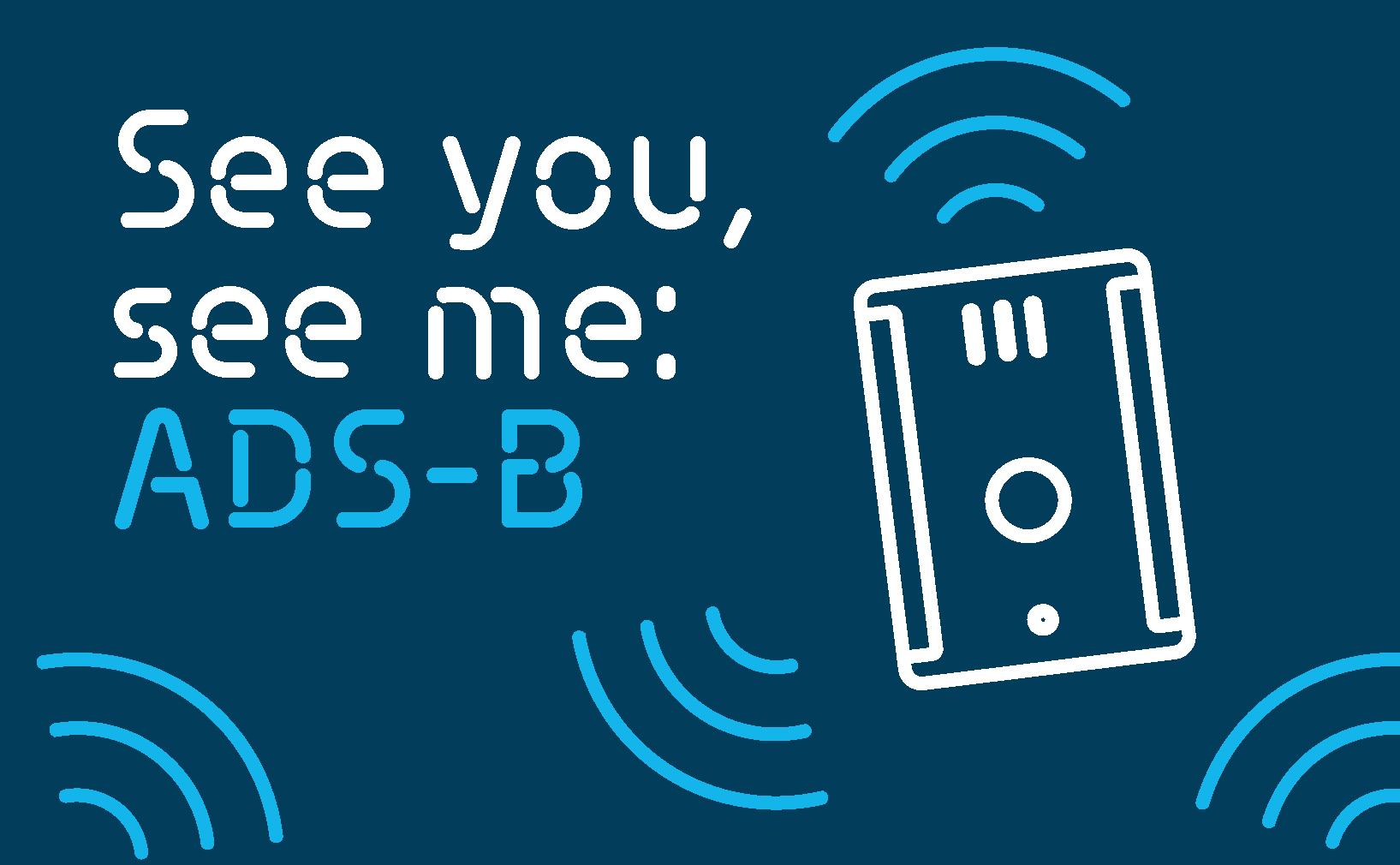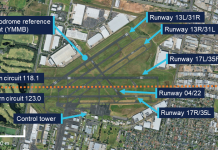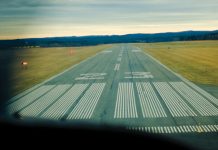Automatic dependent surveillance–broadcast (ADS-B) could save your life which is why the government will pay you to fit it.
What is ADS-B?
ADS-B is a system that makes an aircraft visible to air traffic control and other aircraft (via a component called ADS-B OUT) and, depending on the configuration installed in an aircraft, allows the pilot to see other surrounding aircraft while in the air (via a component called ADS-B IN). It plays an important role in improving situational awareness for pilots.
ADS-B OUT works by broadcasting information about an aircraft’s precise location based on the GPS, barometric altitude, identification and other data to ground stations and other aircraft, once per second.
Since 2017 all aircraft in Australia operating under IFR are required to be fitted with ADS-B OUT. Aircraft operating under VFR are not required to have the system installed; however, this is strongly encouraged and several options are available to install lower-cost equipment. Australia does not currently require aircraft to be fitted with ADS-B IN.
The safety benefits
The Australian Transport Safety Bureau (ATSB) provides a strong argument about the safety benefits of ADS-B through its investigation of aviation accidents and near misses.
Chief Commissioner Angus Mitchell says, ‘When accidents occur in areas of no radar coverage, and where there are no survivors, no witnesses and no on-board recording devices, ADS-B data becomes very valuable evidence for our investigators and their investigations, which ultimately contributes towards better safety outcomes for the whole aviation community.’
A fatal mid-air collision
In February 2020 a Piper PA-44-180 Seminole and a Beech D95A Travel Air collided mid-air, 8 km south of Mangalore Airport in Victoria, resulting in the fatalities of all on board both aircraft. It was the first mid-air collision between 2 civil-registered aircraft operating under IFR in Australia.
While all IFR aircraft must be equipped with ADS-B OUT, neither aircraft had ADS-B IN capability to see each other.
Mitchell says the bureau’s visibility study produced in support of the investigation showed that had the aircraft been equipped with ADS-B IN, the pilots most likely would have located each other before disaster struck.
‘A cockpit display of traffic information with an ADS-B traffic alerting system, or an electronic conspicuity device connected to an electronic flight bag application, could have provided this advance warning of a potential collision to the pilots of both aircraft with this tragic accident probably being avoided.’
Near misses
In October 2023 ATSB investigators received a report of a near-collision within the non-controlled Moorabbin training area in Victoria. A Sling light sport aircraft and a Piper Cherokee came within 100 metres of each other at the same altitude. Although neither aircraft was equipped with ADS-B IN, the flight tracking data confirmed the report and showed investigators just how close both aircraft came to colliding.
‘The flight tracking data we obtained confirmed the Sling crew’s report, as well as showing us just how close both aircraft came to colliding mid-air. Neither aircraft was equipped with ADS-B IN systems, nor were they required to be,’ Mitchell says. ‘However, in lieu of a formal transport safety investigation into this near-collision, we are using this occurrence to further encourage all general and recreational aircraft owners and pilots to strongly consider equipping with ADS-B IN for improving situational awareness.’
RAAus pilot Don Townsend, who has been flying for more than 45 years recalls a similar moment several years ago where ADS-B proved invaluable. Equipped with an iPad running AvPlan, Townsend was flying in a friend’s aircraft when they noticed an aircraft appear at the same altitude heading south – straight at them. They received a traffic alert from the device but couldn’t visually see the aircraft until it was almost on top of them. They quickly descended and watched as it flew over.
‘Luckily, even though he wasn’t looking at it, he had AvPlan running which was what alerted us,’ Townsend says. ‘I often wonder what would have happened had he not had his AvPlan switched on or if he was using OzRunways which doesn’t show up on AvPlan. A system which shows up on ‘everything’ has got to be the way to go.’ [At least one third party app, AvTraffic, does this, by integrating aircraft details from AvPlan on an OzRunways display, and vice versa.]
The benefits of ADS-B across the industry
Within the world of air traffic management (ATM), ADS-B provides far more benefits than radar technology, which should provide greater peace of mind for pilots. The result is efficient spacing and routing in controlled airspace that sits outside of the conventional radar coverage.
Terry Fulton, Acting Head of Airspace Services with Airservices Australia, says it provides much greater visibility for controllers at a comparatively lower cost than radar surveillance.
‘This has resulted in more comprehensive surveillance coverage and increased provision of ATM surveillance services to our customers across continental Australia,’ he says.
At the Australian Maritime Safety Authority (AMSA), ADS-B data is used in search and rescue operations and provides critical information to help save lives.
AMSA’s CEO Mick Kinley says, ‘For aircraft in distress that are equipped with ADS-B, AMSA’s Joint Rescue Coordination Centre will use the aircraft’s last known ADS-B position to refine a distress location.’
See and avoid
Good airmanship dictates that all pilots should be looking out and not be solely reliant on technological means for traffic separation. CASA Advisory Circular AC 91-14 – Pilots’ responsibility for collision avoidance, discusses the see-and-avoid principle and related developments and notes: ‘The need to enhance a pilot’s situational awareness led to the principle of ‘alerted see-and-avoid’. The primary tool of alerted see-and-avoid that is common across aviation – from sport and recreational to air transport – is radio communication. Radio allows for the communication of information (in this instance traffic information) to the pilot from the ground (e.g. air traffic services) or from other aircraft.’
Because the see-and-avoid technique has its limitations, CASA is encouraging eligible operators to invest in ADS-B technology to improve their situational awareness.
More information
Need more information?
- CASA Advisory Circular AC 91-23 ADS-B for enhancing situational awareness provides guidance and technical details on ADS-B.

- More information about the importance of ADS-B is available on our ADS-B webpage.
- Glider pilots – ADS-B can be a very useful aid for your situational awareness.
The rebate: get paid to display
The Australian Government is offering a rebate program to encourage general and recreational aviation operators to install ADS-B.
Eligible aircraft owners can get a rebate of up to 50% of the costs of purchase and, if needed, installation of eligible ADS-B devices, until 31 May 2024.
Grants are:
- for the installation of ADS-B OUT or equipment that includes both ADS-B OUT and ADS-B IN
- capped at $5,000 each
- available for Australian-registered aircraft operating under VFR
- available to buy low-cost portable ADS-B devices.






Comments are closed.